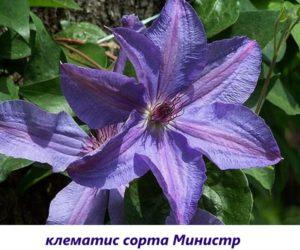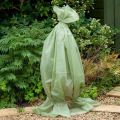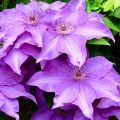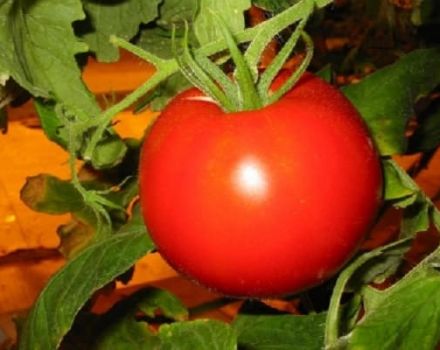Description and group of pruning clematis of the President variety, planting and care
Clematis is an unpretentious garden flower that can be grown even by beginners in horticulture and floriculture. Tall vines with large, multi-colored inflorescences are in great demand among landscape designers. With the help of clematis varieties President they create unique garden compositions, decorate fences, gazebos and arches.
Description and features
A flowering shrub in the shape of a liana, it grows up to 2.5 m in height and up to 1 m in volume. The president's clematis leaf plates are large, green, oval in shape with pointed tips. The thin shoots are supported by special tendrils that cling to any vertical structures.
Long arrows of peduncles grow on the shoots, on which large buds are formed. Clematis bloom in huge star-shaped flowers of bright, purple hues, a white core and reddish anthers. Each petal has a wide strip from the core to the tip, which is colored with a lighter shade of purple or blue.
Important! Clematis of the President variety blooms in two stages. The first phase of active flowering begins in May, when the inflorescences of the main plant bloom. The second stage of flowering is provided by young shoots of the current season. The flowering period begins in mid-July and lasts almost until the last days of September..
Breeding history
Clematis varieties President were bred by British breeders in the 19th century. But even among the many varieties of these plants, the variety is in demand to this day.
The flower got its name in honor of the president of the Royal Botanic Society, where it was bred for the first time.
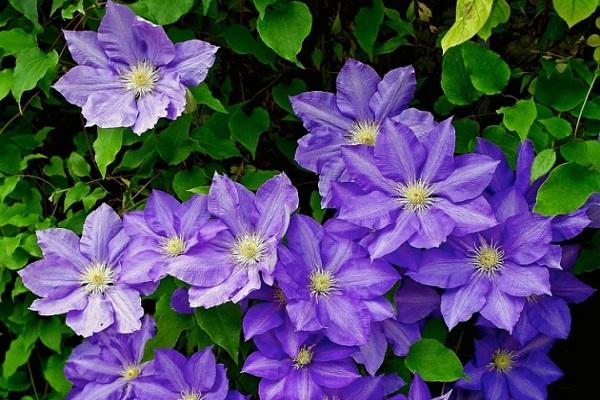
Planting and leaving
To grow a garden culture that blooms from May to September, it is necessary to carry out timely and correct work on planting seedlings in open ground.
Seat selection
The correct choice of a place for planting flowers will ensure active development and abundant flowering of clematis.
- For planting plants, they choose sunny, dry areas on small elevations.
- Garden culture does not tolerate strong winds and drafts.
- If there are close deposits of groundwater on the site, then the place for planting flowers must be raised by 15-20 cm. Otherwise, the plants are exposed to excessive moisture, which will serve the development of fungal diseases and rotting of rhizomes.
- Plants planted close to buildings also suffer from excess moisture that gets into the soil from the roof.
Advice! To protect the root system of clematis President from severe overheating, annual flowers are planted around the bushes, which shade the plant.

Soil preparation
The composition of the soil determines the growth and flowering of the garden culture. Therefore, clematis are planted in a previously prepared fertile, loose soil with a low acid content. Peat, sand and mineral fertilizers are added to well-loosened soil. Soil preparation is carried out in advance, 2-3 weeks before planting.
The choice of planting material
If the planting material is grown independently, then before planting in open ground, the rhizomes are disinfected with special means.
But when buying seedlings, first of all, they examine the root system of the plant. It should be free from damage, putrefactive deposits, seals and not overdried. The shoots should have 2-4 vegetative buds. The acceptable size of the aboveground part of the seedling is from 30 cm, with a smooth shoot without damage and manifestations of diseases and pests.
Before planting, the seedlings are dipped for 30-60 minutes in settled water, then treated with antibacterial agents or a weak solution of manganese.
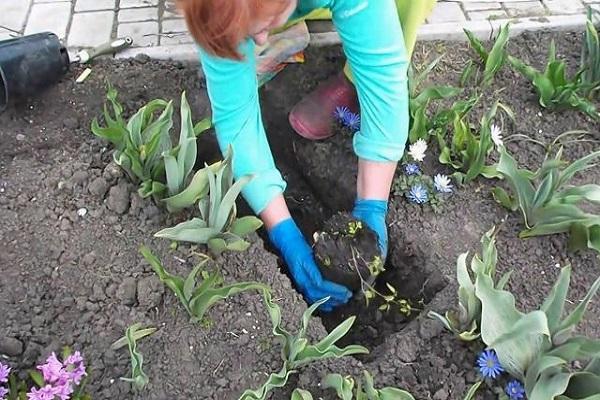
Landing scheme
Blooming liana is a tall and sprawling plant. When planting seedlings, at least 1.5 m of free space is left between the plants.
- In the prepared area or flower bed, dig holes ranging in size from 60 to 90 cm in depth, and the same size in diameter.
- Tall pegs are installed in the holes that will support the plant.
- A layer of stones or rubble is laid out in the hole. This procedure will prevent moisture from stagnating in the soil.
- Next, a small pile of fertile soil is poured on which a seedling is installed.
- The rhizomes are neatly laid out in the hole, sprinkled with soil and thoroughly watered.
Important! When planted in open ground, the root collar of clematis deepens 8-10 cm from the upper soil level.
Timing
Planting flowering creepers in open ground depends on the climatic characteristics of the region. In temperate and southern latitudes, a flower is planted at any time from spring to late autumn. But, according to experienced gardeners and florists, the best time to plant flowers is still autumn.
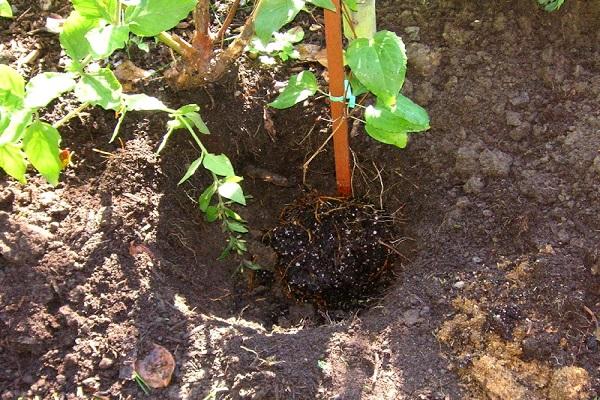
Care
Like any actively flowering plant, clematis needs careful care. Watering in hot, sultry weather is especially important for flowering creepers.
Watering
Watering is done 1-2 times a week, irrigating not only the rhizomes, but also the leaves of the plant. In dry weather, the amount of watering is increased.
Adult plants have a well-developed root system, therefore, up to 40 liters of water are poured under the bush when watering. Young shoots need up to 20 liters of moisture for 1 watering.
Loosening and weeding
So that extraneous weeds do not impede the growth of flowers, they carry out loosening of the soil and weeding. Also, loosening the soil helps the plant to oxygenate the root system and dose soil moisture.
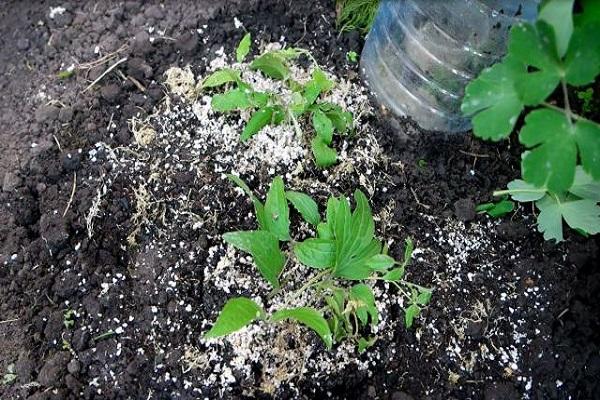
Top dressing
Flowers are fed based on the fertility of the soil on which they grow. Clematis responds well to organic and mineral fertilizers and fertilizing. As a rule, during the entire growing season, the flowers are fed 2-3 times, alternating mineral dressings with organic fertilizers.
Disease and pest control
The main cause of diseases and the appearance of pests is improper and untimely care of plants. Also, climatic conditions have a negative impact on clematis.
Wilt
This is a fungal infection, the main enemy for clematis President. Arises from an excess of moisture in the soil and air. The plant quickly withers, turns black and dies.In order to avoid damage to flowers by verticillary wilting, it is recommended to spray the bushes in the spring with special preparations based on fungicides.

Gray rot
Gray mold spreads in a humid, cool environment. Gray, fluffy spots appear on the leaves of the vine. The plant withers and dries up quickly. The fungus spreads quickly by air, so at the first symptoms, the bushes are treated with fungicides.
Powdery mildew
With prolonged heat and heat, the plants are affected by powdery mildew. To prevent the disease, folk recipes or preparations based on the same fungicides are used.
Rust
If yellow swellings with small particles appear on the clematis, it means that the plant is threatened with rust infection. The disease quickly destroys the leaf cover and poses a threat to the growth and development of shoots.
In order to combat fungal disease, copper-based preparations are used.
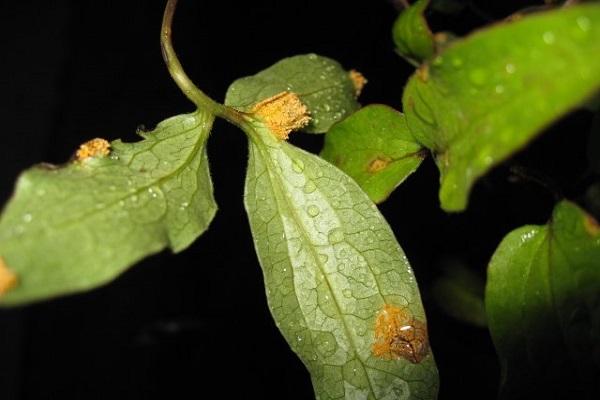
Nematodes
Nematodes parasitize the entire plant, from the rhizome to the leaf cover. Unfortunately, no effective drugs have yet been invented to combat this pest. Therefore, as a preventive measure, the roots of suspicious plants are treated with very hot water (+50 degrees), and calendula or dill are planted nearby. Nematodes cannot tolerate these crops and disappear.
Important! In the place where the plants infected with the nematode grew, the soil is disinfected. For 3-5 years, it is forbidden to plant flowering vines on this site..
Rodents
During winter, rodents can damage the plant. To prevent the death of flowers, poisoned traps and baits are laid out next to them.
Aphid
To prevent the appearance of aphids, every spring I treat the plants with preparations based on fungicides. When vines are infected with this pest, the bushes are sprayed with special solutions with the addition of insecticides.
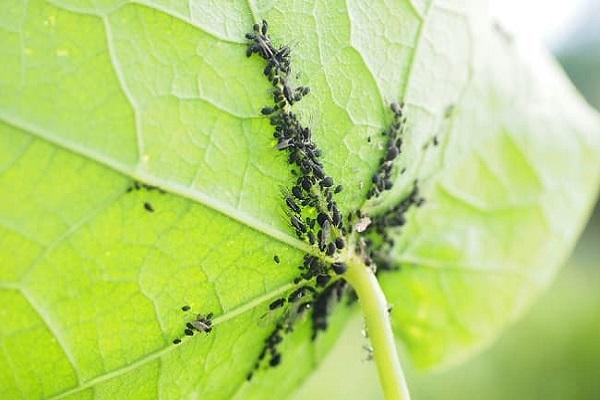
Preparing for winter
Adult clematis bushes President easily tolerate frosts down to -30 degrees. The only condition for wintering is deep soil mulching using peat, sawdust or pine needles.
In conditions of prolonged low temperatures, the plants are untied from the supporting structures, folded up, and laid on the soil previously insulated with special materials. From above, the bush is covered with spruce branches or dry foliage. At the first snowfall, the flower is covered with a snowdrift.
Trimming group
Variety President is included in the second pruning group. This means that the plant is cut off after the end of the flowering period and before winter rest, shoots up to 1 m are left, and the rest of the plant is removed.

Garter to support
The garter to the support occurs as the clematis grows and develops. If the flower grows near a decorative trellis or fence, then some vine shoots are directed horizontally so that they cover a large area.
Reproduction
As soon as the first clematis bloom on the garden plot, gardeners and florists immediately think about the reproduction of beautiful flowers. The President variety is propagated by cuttings or layering.
Layers
For hybrid varieties of horticultural crops, propagation by layering is a guarantee that all the properties and characteristics of the mother plant will be preserved. In autumn or spring, grooves break out around the bush, into which young but strong shoots are laid. Further, the grooves are sprinkled with soil, leaving the tip of the shoot on the soil surface.
If necessary, the plant in the groove is watered and fed. If the process of reproduction by layering took place in the spring, then in the fall the seedling is separated from the mother plant along with the formed rhizomes, and planted separately.
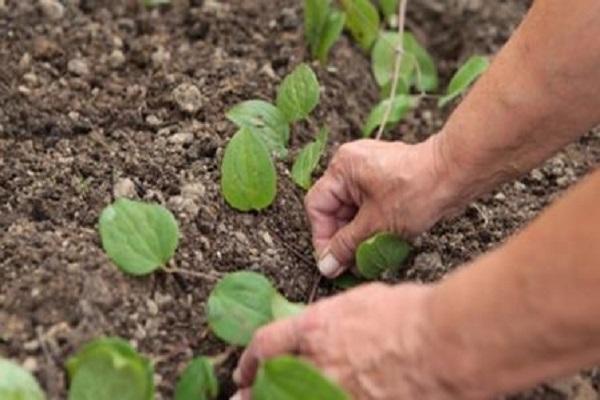
After the autumn work, the plant is removed from the groove in the spring, and also planted as an independent flower.
Cuttings
With the help of cuttings, you can get many seedlings of beautiful flowers at once.Before flowering, strong, healthy shoots are selected from an adult bush and cut off. Several cuttings are cut from large branches at once, the main thing is that each of them has 2-3 vegetative buds and leaves. Further, the plants are treated with special preparations that stimulate growth and are planted in spacious pots with fertile soil. The planted plants are covered with a film or a glass jar; direct sunlight on young seedlings is also unacceptable.
The next year, the President's ready-made clematis seedlings are planted in open ground.
Use in landscape design
Clematis President is used by landscape designers to create unique floristic solutions. Also, with the help of beautiful vines, they decorate trellises, facades of buildings, arches and gazebos.
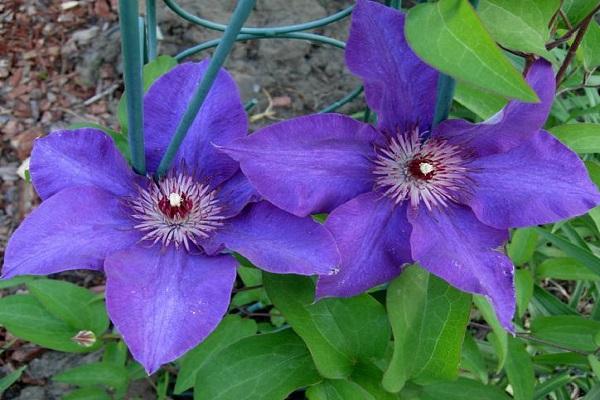
Reviews
Sergey Pavlovich, Nizhnegorsk, Crimea
About 15 years ago, several varieties of clematis were planted. We planted the President variety near the house. Liana is constantly in the shade, but this is not reflected in flowering and growth. Every year we look forward to spring to once again enjoy the beautiful flowers.
Elena Nikolaevna. Moscow suburbs
Several years ago I saw an unusual flowering lianas at a friend's dacha, as it turned out, they were clematis President. A friend cut off the cuttings, which I successfully planted the next year on my site. For 3 years now, the flower tirelessly pleases with abundant flowering and unearthly beauty. The plant is completely unpretentious, and it grows at an amazing speed.
Vladimir Grigorievich, Rostov-on-Don
Clematis President was planted by my parents, many years ago. But until now, the bushes annually delight with their long flowering. Care for them is minimal, in the heat we water, in the spring we feed them with organic matter. Every year we share the layering with friends and neighbors.

